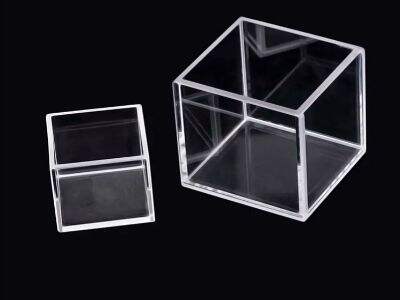Quartz is a type of special matter that scientists often use in experiments to measure various things. When scientists want to look at what happens to chemicals when they interact with each other, they need to use a machine called a UV spectrophotometer. This apparatus employs a quartz cuvette to contain the chemicals under test. But how does a scientist know which cuvette to use for their experiment? Here are some important considerations to have in mind when selecting a quartz cuvette for UV spectroscopy.
Why Use Quartz for UV Measurements
Quartz is very transparent, which allows scientists to look through it rather easily. This is because they must see the chemicals in the cuvette during their measurements. Quartz is tough and can withstand high temperatures, so it is suitable for experiments that involve heating. Another reason scientists use quartz is that it allows little absorption of UV light, which improves their results.
Selecting the Appropriate Path Length
The path length is the distance it passes through the cuvette before it's measured. The length of the path you pick is based on what you’re testing and the strength of your chemicals. If your chemicals are very potent you may need a shorter path length to get good results. If your chemicals are less pure you might need a longer path length so the UV light can pass through them properly.
Ensuring the Cuvette Can Withstand Chemicals
Certain chemicals can be very aggressive and can destroy some cuvettes. It's also good to ensure that the Quartz Cuvettes can withstand the chemicals you plan to put in it. Quartz is an excellent material to use for experiments involving strong acids or bases which would normally damage a glass container. It also needs to be washed really well after each use to prevent it from getting beat up for future experiments.
Choosing an Easy to Clean Cuvette
It is very important to clean the cuvette after use. Dirty cuvette can alter your experiment results and provide erroneous data as well. If you are deciding on the best quartz cuvettes, you can consider the one with smooth surfaces that is easy to clean. Some cuvettes are also treated to make them easier to clean, which can be important to getting accurate results.
Balancing Cost with Quality
If you are selecting a quartz cuvette, you should also consider how much you are willing to pay and whether you require a high-quality cuvette for accurate measurements. It’s tempting to skimp and buy a cheap cuvette, but a good quartz cuvette makes all the difference to your results. Consider how often you will be using the cuvette, as well as how long you want it to last. You may spend more initially on a durable, dependable cuvette but you will save in the long run, as it will not require frequent replacement.
 EN
EN
 AR
AR
 BG
BG
 HR
HR
 CS
CS
 DA
DA
 NL
NL
 FI
FI
 FR
FR
 DE
DE
 EL
EL
 HI
HI
 IT
IT
 JA
JA
 KO
KO
 NO
NO
 PL
PL
 PT
PT
 RO
RO
 RU
RU
 ES
ES
 SV
SV
 TL
TL
 ID
ID
 LV
LV
 SR
SR
 SK
SK
 UK
UK
 VI
VI
 HU
HU
 MT
MT
 TH
TH
 TR
TR
 FA
FA
 AF
AF
 MS
MS
 GA
GA
 IS
IS
 LA
LA
 KK
KK







